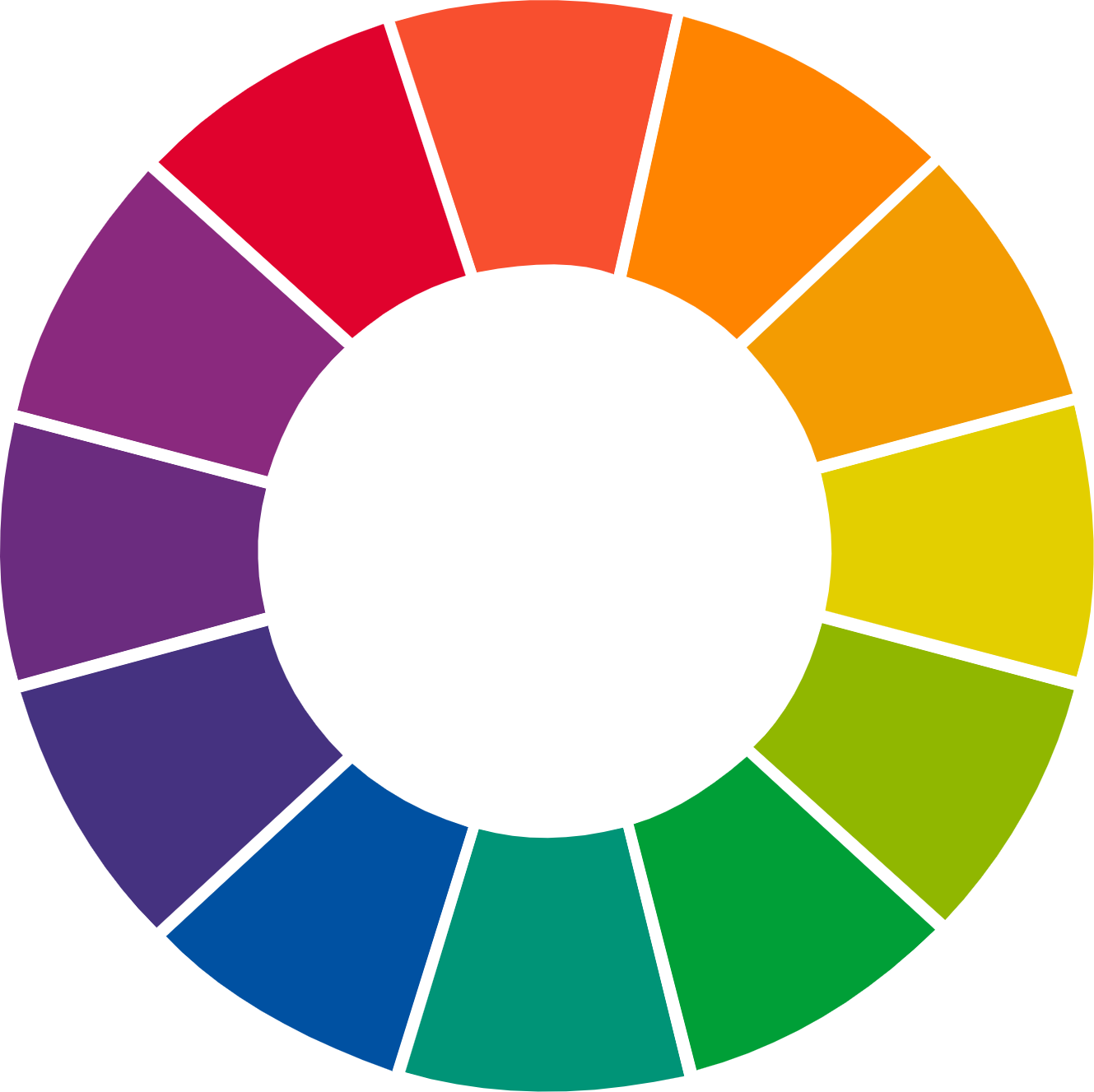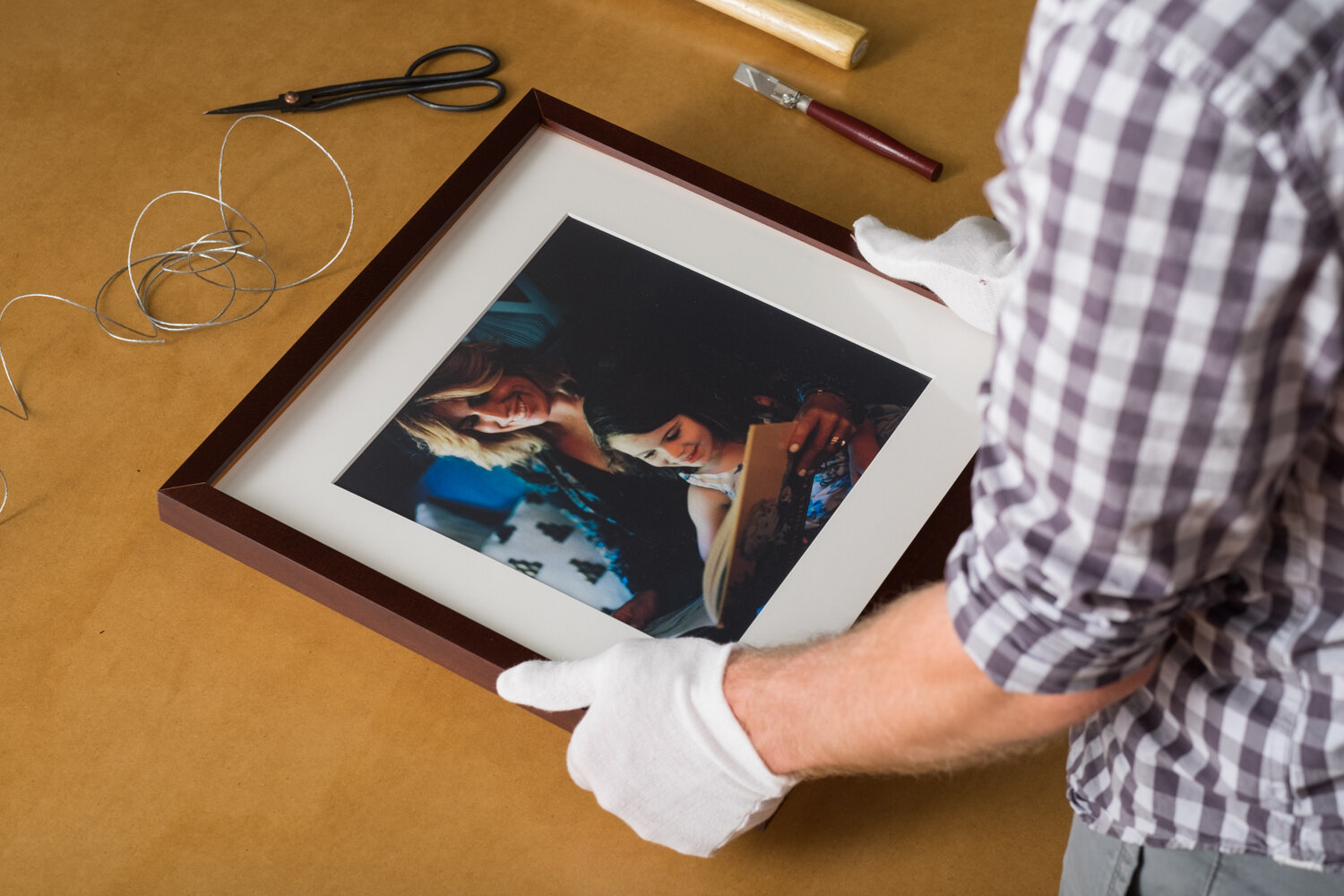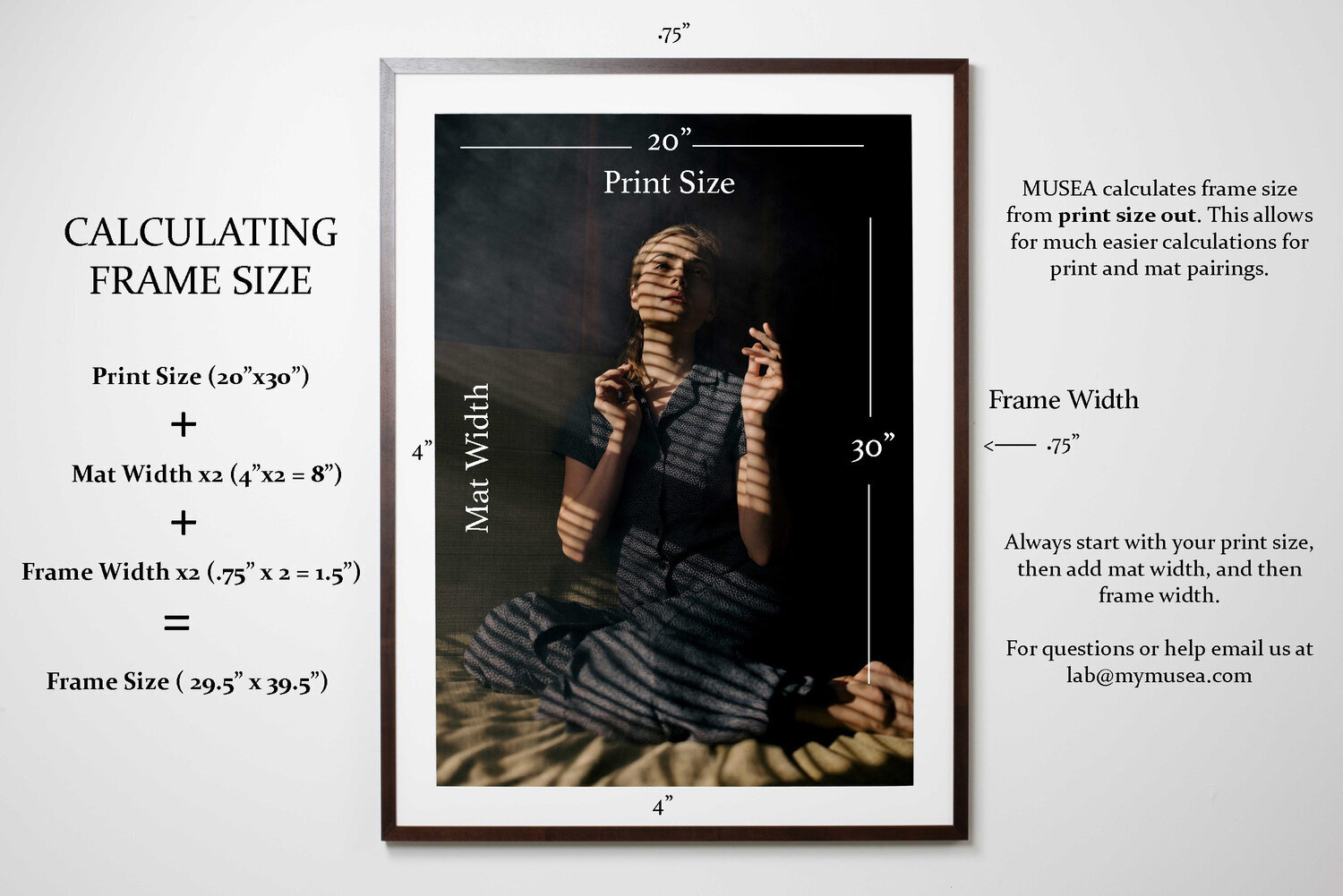Understanding Our Framing Options
This page will help you understand how we calculate frame sizing for your fine art prints & photos, the differences between our acrylic options, and the various mat options related to framing.
UV Acrylic vs Museum Acrylic
UV Acrylic
99% UV Blocking
Museum Acrylic
Glare Reduction Coating, 99% UV Blocking & Scratch Resistant Coating
Acrylic Information
Our UV Acrylic blocks 99% UV light with 92% light transmission.
Our Museum Acrylic has a non-glare coating, blocks 99% UV Light, transmits 98% of light, has an abrasion-resistant coating to help prevent scratches, and has an anti-static coating to reduce lint and dust.
In the examples shown, we placed the framed print opposite of a window, which you never want to do, but we did for illustration purposes only.
Notice how on the left the glare completely blocks the edge of the mat vs. the right where you can see the edge of the mat clearer.
Benefits of our Acrylic
Half the weight of glass (easier to move)
Shatter-Resistant (safer to handle/ship)
Block 99% UV Light (Best in the market)
3mm Thick (provides a glass-like appearance)
Made in the USA
Mat vs No Mat Options
Our museum quality framing includes 4 mat width choices.
You can choose between No Mat or with a 2" Mat, 3” Mat, or 4" Mat.
If you choose not to have a mat around your print, we will put spacers between the acrylic and the print so that the paper doesn't touch the acrylic.
Examples of an 11x14 print framed with no mat, 2”, 3”, and 4” mat
For Deckled prints we float mount the print and cut the mat opening 1/2” larger than the image size to show off the hand torn edge
We also offer multi-opening mats, and are able to produce most custom requests. Email lab@mymusea.com for custom quotes and ordering instructions!
Frame Care & Handling
To clean your frame, we suggest using a soft microfiber cloth to gently remove dust from the frame edges.
DO NOT use glass cleaner on MUSEA frames. The cleaners can leave the acrylic looking foggy and not clear.
DO NOT use paper towels to clean acrylic. Paper towels can scratch the acrylic. It’s recommended to use a soft cotton or microfiber cloth to gently wipe away dust.









